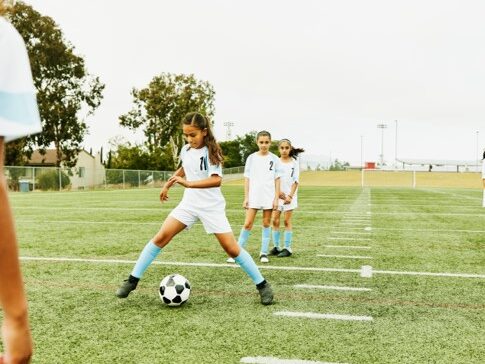Meet the team of sports medicine specialists in the Kaiser Permanente East Bay Service Area. They treat thousands of KP members in the Oakland and Richmond medical centers.


When Joshua Hatch, MD, first joined the Kaiser Permanente East Bay Service Area 21 years ago, the sports medicine team only consisted of he and another orthopedic surgeon.
Today, the service area’s sports medicine group of specialists includes 3 full-time medical sports medicine doctors and one part-time physician, in addition to 3 orthopedic surgeons.
The team works primarily out of the Oakland Medical Center. However, construction is also currently under way the Richmond Medical Center, which will provide primary dedicated space for sports medicine soon, Dr. Hatch said.
“Our team has grown,” Dr. Hatch said. “We now have 2 sports medicine surgeons, 2 pediatric orthopedic surgeons that provide surgeries related to pediatric sports injuries, and 3 primary care physicians that provide comprehensive sports evaluations as well as ultrasound-guided injections and procedures.”
Dr. Hatch is also a team physician for the University of California at Berkeley, where he provides coverage for all student athletes, working primarily with both the football and basketball teams. He offers athletic care to the students at St. Mary’s College and Holy Names University. Anthony Okamura, MD, also works with athletes from St. Mary’s and Contra Costa community college, and Zachary Bailowitz, MD, is the head team physician for California State University, East Bay.
The East Bay sports medicine team treats a spectrum of injuries, including ligamentous injuries like ACL tears, tendon injuries like Achilles tendinitis, as well as muscular strains, including hamstring and calf injuries. Recently the team has seen an increase in the number of patients coming, and many injuries have been related to overuse, which is happening more often due to periods of physical inactivity, said Dr. Bailowitz, one of East Bay’s medical sports medicine physicians.
“We’re seeing a lot of new injuries because people were not doing regular activity for a whole year or more due to the ongoing pandemic,” Dr. Bailowitz said. “If you ran 3 miles 3 times a week for 6 months and abruptly stopped for a long time, that doesn’t mean you should go back to that same level of exercise when you start being active again.”
The team uses ultrasound both to guide injections as well as to diagnose musculoskeletal injuries. They also work very closely with the physical therapists on staff. One of the team’s surgeons Stephan Zmugg, MD, also specializes in hip preservation, which involves a series of new advanced techniques within sports medicine focusing on preserving and stabilizing patients’ original hip bones before performing hip replacements.
One of Dr. Bailowitz’s recent success stories involved a 49-year-old avid marathoner who couldn’t run for several years due to pain in his Achilles tendon. Dr. Bailowitz treated the patient with ultrasound-guided injections around his calf and Achilles. The patient was able to go back to running a few months ago.
“As sports medicine doctors, our goal is ultimately to keep people active for as long as possible,” Dr. Bailowitz said.
The East Bay sports medicine team also includes physicians John Cummins, MD, Tara Shaw, MD, and Scott Kaiser, MD.
Visit East Bay Service Area’s Sports Medicine website for more information.


